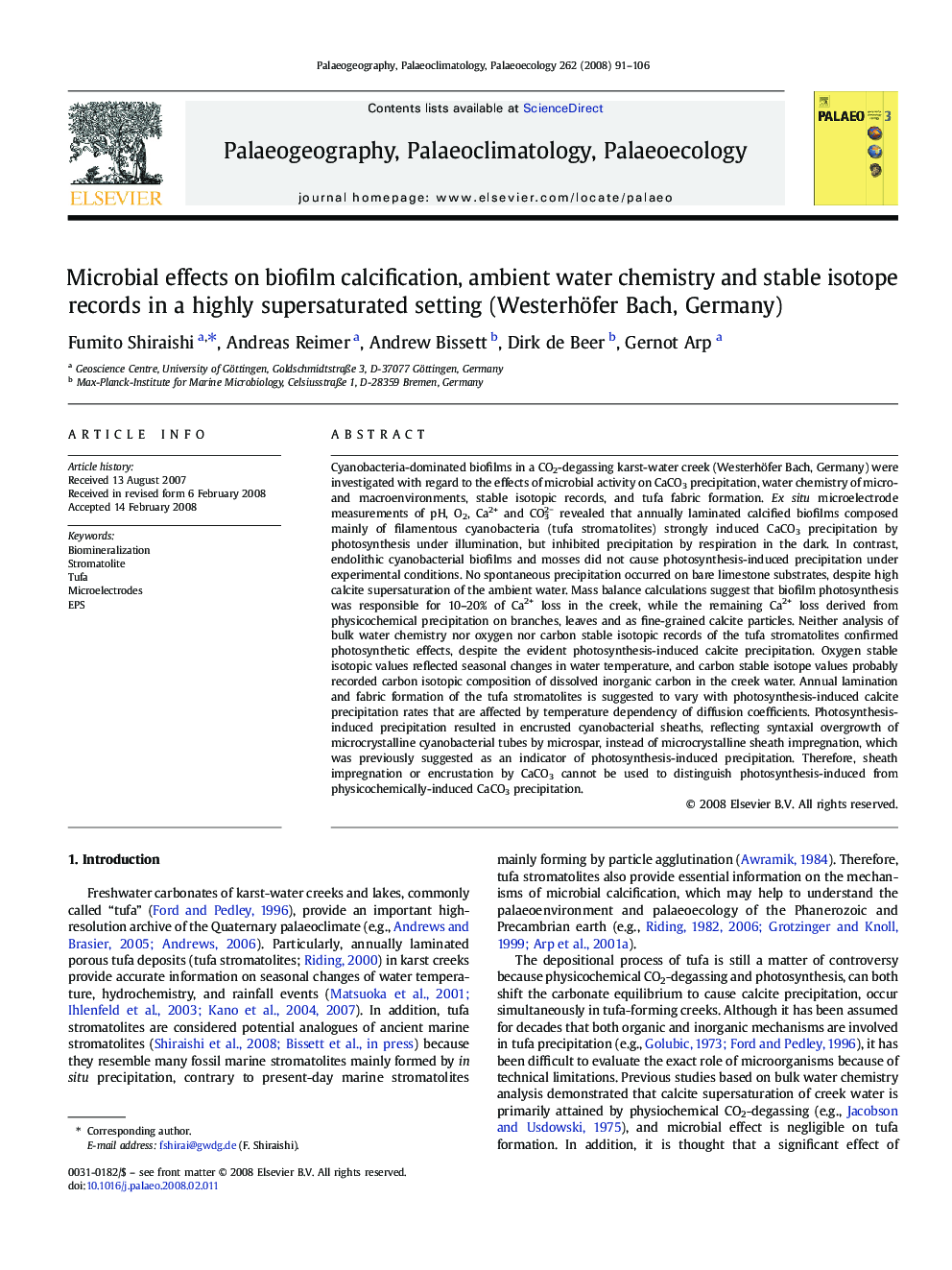| Article ID | Journal | Published Year | Pages | File Type |
|---|---|---|---|---|
| 4468598 | Palaeogeography, Palaeoclimatology, Palaeoecology | 2008 | 16 Pages |
Cyanobacteria-dominated biofilms in a CO2-degassing karst-water creek (Westerhöfer Bach, Germany) were investigated with regard to the effects of microbial activity on CaCO3 precipitation, water chemistry of micro- and macroenvironments, stable isotopic records, and tufa fabric formation. Ex situ microelectrode measurements of pH, O2, Ca2+ and CO32− revealed that annually laminated calcified biofilms composed mainly of filamentous cyanobacteria (tufa stromatolites) strongly induced CaCO3 precipitation by photosynthesis under illumination, but inhibited precipitation by respiration in the dark. In contrast, endolithic cyanobacterial biofilms and mosses did not cause photosynthesis-induced precipitation under experimental conditions. No spontaneous precipitation occurred on bare limestone substrates, despite high calcite supersaturation of the ambient water. Mass balance calculations suggest that biofilm photosynthesis was responsible for 10–20% of Ca2+ loss in the creek, while the remaining Ca2+ loss derived from physicochemical precipitation on branches, leaves and as fine-grained calcite particles. Neither analysis of bulk water chemistry nor oxygen nor carbon stable isotopic records of the tufa stromatolites confirmed photosynthetic effects, despite the evident photosynthesis-induced calcite precipitation. Oxygen stable isotopic values reflected seasonal changes in water temperature, and carbon stable isotope values probably recorded carbon isotopic composition of dissolved inorganic carbon in the creek water. Annual lamination and fabric formation of the tufa stromatolites is suggested to vary with photosynthesis-induced calcite precipitation rates that are affected by temperature dependency of diffusion coefficients. Photosynthesis-induced precipitation resulted in encrusted cyanobacterial sheaths, reflecting syntaxial overgrowth of microcrystalline cyanobacterial tubes by microspar, instead of microcrystalline sheath impregnation, which was previously suggested as an indicator of photosynthesis-induced precipitation. Therefore, sheath impregnation or encrustation by CaCO3 cannot be used to distinguish photosynthesis-induced from physicochemically-induced CaCO3 precipitation.
